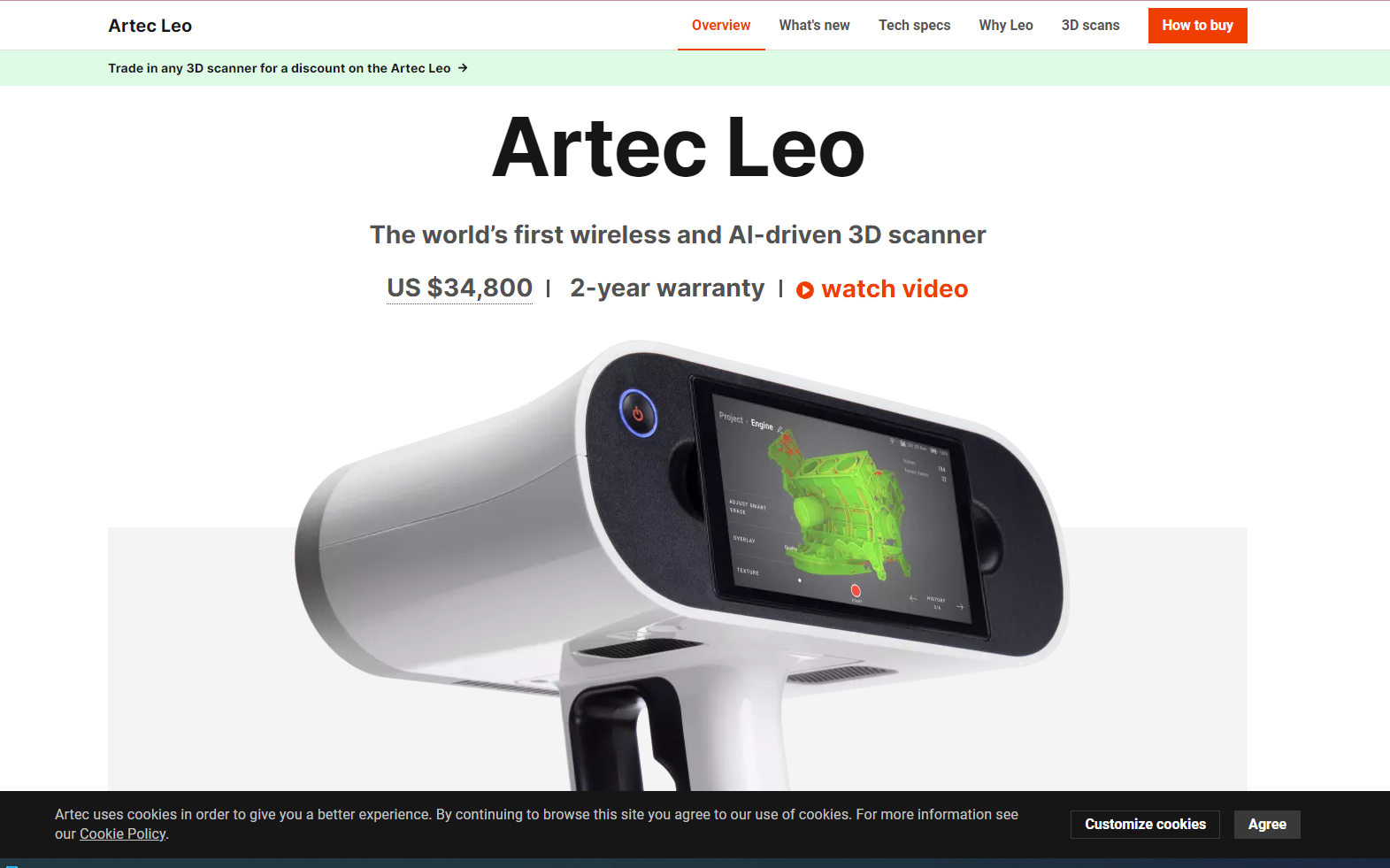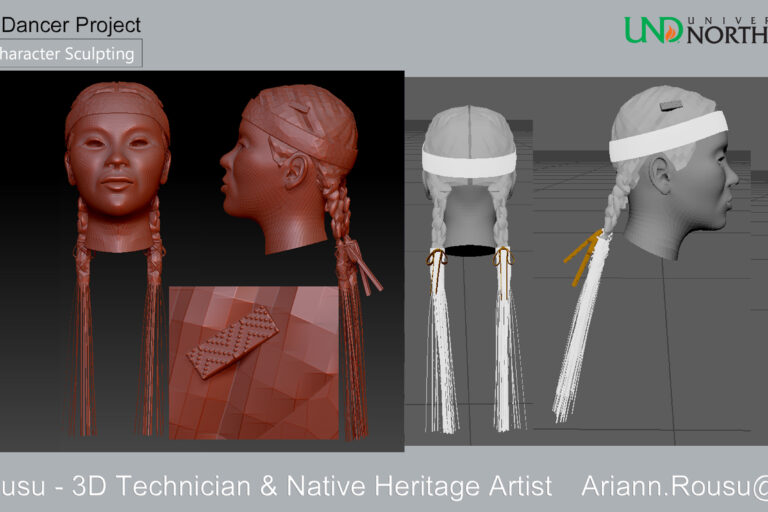Native Dancer: 3D Scanning Assets
Author: Ariann Rousu – Native Dancer Digital Artist
Another really cool, and useful set of tools we have in the UND DREAM Lab are the 3D scanners. 3D scanners can be used to scan real objects to create a 3D replica. Objects scanned are then used in other software and projects. The objects scanned aren’t always perfect but can then be rendered and repaired further on the computer. The two scanners we have in the lab are called the Leo and the Spider by Artec. 3D scanning can be used in many different scenarios, such as building custom parts, replication of scenes and so much more.

The 3D scanners are used in the Dream Lab for many different projects. For Native Dancer we hope to use the scanners to create more Native/Indigenous assets in the future. So far, I have only been able to use the scanners a few times. Each time the assets I tried to scan were too difficult to execute the scans properly.
What’s the difference in the scanners?
When using the Leo, lasers are used to collect the data of the object being 3D scanned, often not picking up on dark colors. Some of the beadwork I wanted to scan had a lot of black in it. There is a medium we can use to spray onto surfaces like this to help with the scanning, however we chose not to use it on these beaded items. Other surfaces that can be difficult to scan are reflective surfaces.
The Spider 3D scanner is different from the Leo in the way it collects the 3D Data. As mentioned, the spider does not use lasers, instead it uses light patters to overlay the object. The data being collected by the scanner then creates the scan based on discrepancies in the light patterns. Both the Leo and Spider create accurate scans of objects. The Spider is overall lighter weight than the Leo and is useful for smaller detailed objects. The Leo is more powerful and is good for larger scaled objects. Both scanners have their strengths, and both are amazing tools we use often in the DREAM Lab.


